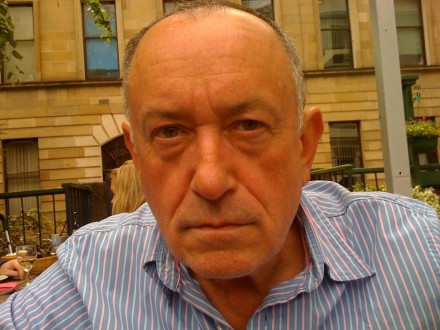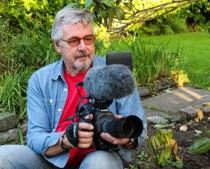Lindsay Gordon is director of Peacock Visual Arts in Aberdeen, a multi-media artists’ production facility and projects led gallery. These are Lindsay’s first 5 jobs:
My first job after the free-lance joys of a paper round was, at weekends and school holidays, as a store boy for the West of Scotland grocers J Curley’s. Old school, butter came in hundredweight wooden barrels that you had to chop open with an axe. The huge slippery blocks had to be carried up the counter, dodging the girls serving, to the marble slab by the window where, with two wooden paddles, a more skilled operative turned yellow chunks into neat half-pound rectangles. The pay was two bob an hour, the incentive the girls.
As a student, there were summer jobs. (No tuition fees then and as long as you didn’t spend too much on books your grant would just about keep you alive during term time.) The jobs were usually manual labour. One involved being part of a gang making pre-cast concrete lintels, beams and blocks. I’m sure this predated Carl Andre. Another, less artistic but nonetheless satisfying, was loading the line in a brewery’s bottling hall. Here there were good days and bad. Bad when your team was assigned to loading the empties – unremitting, thirsty work. Good the ones, less easy to recall, spent unloading crates of new-filled bottles. (Fowler’s Wee Heavies were the refreshments of choice, at a third of a pint and 8 proof, their illicit consumption, juked doon behind a palette, was both fast and effective.)
Here, whatever the pay, the incentive was to save enough money as quickly as possible to spend at least a month hitchhiking around Europe. Assuming one slept rough, never sat down in a bar, avoided all restaurants and only drank wine which came in large plastic bottles, 50 quid would get you a surprisingly long way.
Eventually it came – graduation with a pleasingly non-swot like 2.1 in Fine Art and time, probably, to get a proper job. After some research a letter wings its way to UK gallery directors (there weren’t that many) announcing their good fortune in having me available for recruitment. Only one replied, Richard Demarco. At that time, 1972, Ricky was based in the New Town elegance of Melville Crescent: the gallery plush, the receptionists posh. Mr. Demarco was on the phone to New York, would I just take a seat. Ok, international art world here I come. All goes well at the interview. When can I start? The vulgar question of money intervenes, the answer £12.00 a week. When it’s pointed out that this is less than I’m getting on the dole my proto-employer agrees and blames the bloody Scottish Arts Council. Ah, what propitious words and, ah, what could have been…
After two or three unsuccessful interviews at national and local authority galleries an (as far as I was concerned) outsider application came up. I got a job as course assistant at the then four-year-old Open University. At the time and now I still think this was the best possible real start to my career. Firstly because the socialist vision that everyone deserved a proper university education, developed by Harold Wilson and Jennie Lee was still very clear and strong. We were also all conscious that what we were, a distance learning university that did not have students on campus, was new and that we were at the front of using, and sometimes inventing, new ways of educating. Internally the organisational structure was flat and democratic – no senior common room, no high table. The range of experience of research, writing, publishing, radio and television production and teaching that I enjoyed in the three years I worked there, not to mention the outstandingly talented people I met, could not have been bettered anywhere. I worked on preparing a course on Architecture and Design 1890 – 1939, taught on the Arts Foundation and Renaissance and Reformation courses and started a temporary exhibitions programme at our Milton Keynes HQ.
I never really looked back after that although soon, going to work at the Scottish Arts Council, Ricky and I were to meet again…

//////////
We’ve asked professionals in creative industries what jobs they have had in the past to get their foot through the door (or at least pay the rent). For more in the “My First 5 Jobs” series look here.














Comments